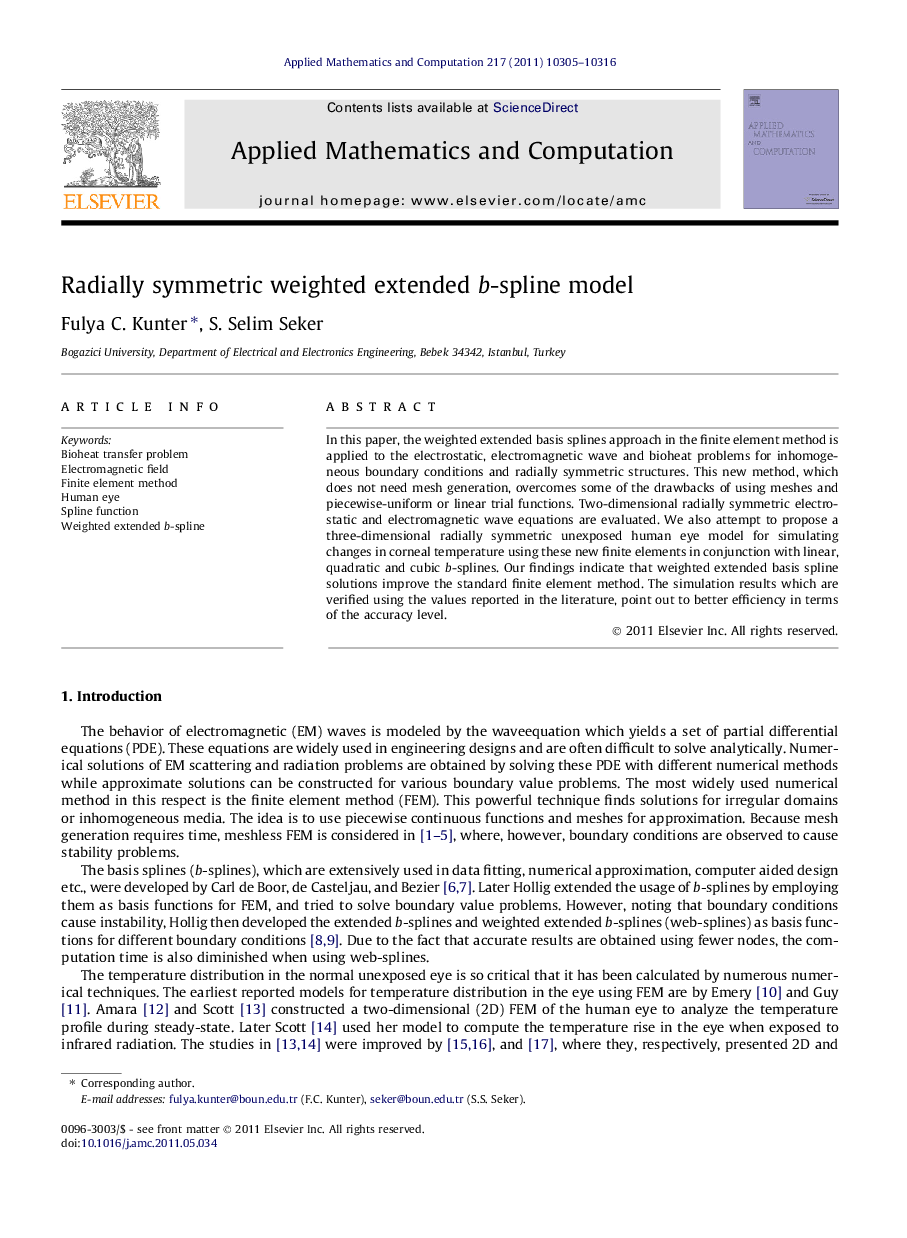| Article ID | Journal | Published Year | Pages | File Type |
|---|---|---|---|---|
| 4630767 | Applied Mathematics and Computation | 2011 | 12 Pages |
In this paper, the weighted extended basis splines approach in the finite element method is applied to the electrostatic, electromagnetic wave and bioheat problems for inhomogeneous boundary conditions and radially symmetric structures. This new method, which does not need mesh generation, overcomes some of the drawbacks of using meshes and piecewise-uniform or linear trial functions. Two-dimensional radially symmetric electrostatic and electromagnetic wave equations are evaluated. We also attempt to propose a three-dimensional radially symmetric unexposed human eye model for simulating changes in corneal temperature using these new finite elements in conjunction with linear, quadratic and cubic b-splines. Our findings indicate that weighted extended basis spline solutions improve the standard finite element method. The simulation results which are verified using the values reported in the literature, point out to better efficiency in terms of the accuracy level.
